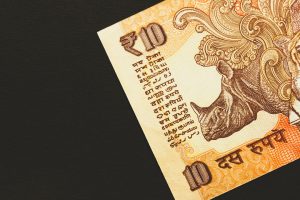Forex trading, also known as foreign exchange trading, is a decentralized global market where currencies are traded. It involves buying and selling of currencies with the aim of making a profit. Forex trading is a popular form of investment and has become increasingly accessible to individuals in recent years.
How Forex Trading Works
Forex trading works through a network of financial institutions, such as banks, hedge funds, and retail forex brokers. These institutions act as intermediaries between the buyers and sellers of currencies. The forex market operates 24 hours a day, five days a week, across different time zones.
In forex trading, traders speculate on the value of one currency against another. For example, a trader may believe that the value of the US dollar will increase in relation to the euro. In this case, the trader would buy dollars and sell euros. If the trader’s prediction is correct, they will make a profit from the difference in the exchange rate.
Forex trading involves trading in currency pairs. The currency pair represents the exchange rate between two currencies. For example, EUR/USD represents the exchange rate between the euro and the US dollar. The first currency in the pair is called the base currency, while the second currency is the quote currency.
When trading in forex, traders use leverage to amplify their potential profits. Leverage allows traders to control a large amount of currency with a small amount of capital. For example, if a trader has a leverage of 1:100, they can control $100,000 worth of currency with just $1,000 of capital.
Types of Forex Trading
There are different types of forex trading, including spot trading, forward trading, and options trading.
Spot Trading
Spot trading is the most common type of forex trading. It involves the buying and selling of currencies at the current market price. The settlement of spot trades usually takes two business days.
Forward Trading
Forward trading involves buying and selling currencies for a future date at a predetermined price. The settlement of forward trades can take place at any time in the future.
Options Trading
Options trading involves buying and selling options contracts. Options contracts give the holder the right, but not the obligation, to buy or sell a currency at a predetermined price on or before a specific date.
Benefits of Forex Trading
Forex trading has several benefits, including:
High liquidity: The forex market is the most liquid market in the world, with trillions of dollars traded daily.
24-hour market: The forex market is open 24 hours a day, five days a week, making it accessible to traders from all over the world.
Low transaction costs: Forex trading has low transaction costs compared to other financial markets.
High leverage: Forex trading allows traders to control a large amount of currency with a small amount of capital.
Risks of Forex Trading
Forex trading also has risks, including:
High volatility: The forex market can be highly volatile, with exchange rates fluctuating rapidly.
Leverage risk: High leverage can amplify potential profits, but it can also lead to significant losses.
Counterparty risk: Forex trading involves trading with financial institutions, and there is a risk of default by these institutions.
Conclusion
Forex trading is a popular form of investment that involves buying and selling currencies with the aim of making a profit. The forex market operates 24 hours a day, five days a week, and involves trading in currency pairs. Forex trading has several benefits, including high liquidity, 24-hour market, and low transaction costs. However, it also has risks, including high volatility, leverage risk, and counterparty risk. As with any form of investment, it is important to conduct thorough research and understand the risks before entering the forex market.





